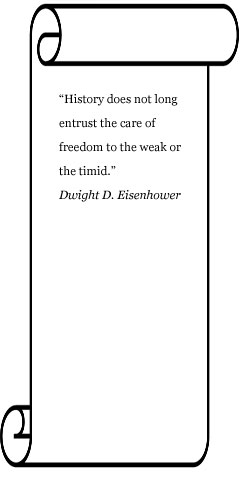| Beyond Normandy:
The Poor, Bloody Infantry
By Mike Bennighof, Ph.D.
March 2012
The British Army that returned to northwestern Europe in
June 1944 came lavishly equipped with tanks and artillery.
But when the time came to take and hold ground, like every
other army of the Second World War it depended on its least
glamorous branch to get the job done.
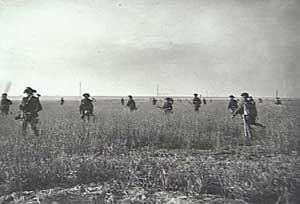
The 4th Duke of Cornwall’s Light Infantry advance
on Hill 112, 10 July 1944. By day’s end, nine of
10 men would be casualties.
In Beyond
Normandy the British foot soldier is more powerful
than in the previous games featuring British infantry, Afrika
Korps and Desert
Rats. To distinguish the pieces, the new type is
called RIF (rifle) instead of INF (infantry) as in the desert
games.
A British rifle platoon of 1944 had 37 men with a 2-inch
mortar and three Bren light machine guns. Three platoons made
up a rifle company. The company commander (a major in the
British Army, unlike the captains commanding companies in
other armies) had three PIAT anti-tank projectors to issue
at his discretion, and a company staff of 15 men (most of
them carrying submachine guns). In game terms, their firepower
is spread over the three platoons and there is no separate
playing piece for the headquarters staff. Platoons in North
Africa did not have the fairly useless mortar, and seven fewer
men.
British platoons are somewhat smaller than their German or
American counterparts, accounting for their slightly lower
firepower. But a British battalion had four rifle companies
rather than the three in the other armies, or 12 rifle platoons
instead of 9.
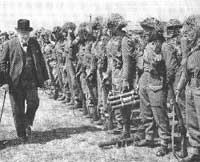
A visitor inspects the 4th Somersets
just prior to D-Day. This battalion
would also suffer grievously for Hill 112.
Man-for-man, the British went into battle with less automatic
weaponry than the Germans. The men carried the standard short-magazine
Lee-Enfield bolt-action rifle, with section leaders and some
headquarters personnel armed with Sten submachine guns. The
Bren was a good light machine gun, the Lee-Enfield a superb
weapon of its type but other armies had adopted or were moving
toward semi-automatic assault rifles, which Britain would
not issue until 1956.
The PIAT had less range than the German Panzerfaust and Panzerschrek
anti-tank rocket launchers or the American bazooka, but had
its own advantages. The PIAT projector resembled an overgrown
child’s toy more than anything else, throwing its bomb
with a combination of small propellant charge and a powerful
spring. Tommies could rarely hit anything with it, but it
provided a morale boost to have something capable to damaging
a tank. On the positive side, the PIAT did not have the back-blast
of the other armies’ rocket-based weaponry, and so would
not give away a position with a jet of exhaust gas or endanger
the firer when unleashed from an enclosed space.
British organization did not provide any dedicated manpower
for the PIAT: When the company commander issued one, some
unlucky Tommy would have to lug the weapon in addition to
his normal load.
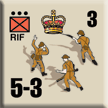
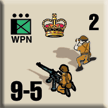

On paper a British infantry battalion had
no machine gun platoons, these being gathered
into separate battalions of their own. In
practice, one or two platoons each with four
Vickers heavy machine guns usually would
be attached, and this is how the battalions
usually operate in Beyond Normandy.
The machine gun platoons have more firepower
than the 1940 to 1942 HMG units of the
desert games, so we re-named them WPN or “weapon” platoons
here to avoid confusion.
The battalion did include a support company with a mortar
platoon with 3-inch mortars, an anti-tank platoon of six 6-pounder
anti-tank guns, and a pioneer platoon (which we labelled SAP
for “sapper” to distinguish it from the less capable
ENG or “engineer” platoons in the desert games).

43rd “Wessex” Division’s memorial on Hill
112.
British battalions did not operate very flexibly with other
formations, and this is reflected in Beyond Normandy.
For the first time, we have formation rules, and there are
sufficient pieces for four British infantry battalions. Unit
density is much higher in this game than in most previous
ones, so the difficulty of operating more than one command
structure in a tight space is modelled very simply and elegantly.
The RIF, WPN, SAP and six-pounder unit “boxes”
are colored to distinguish them. A leader can’t easily
activate units from a different battalion, and as battalions
take losses, their morale can suffer. Britain is running out
of young men, and the army is sensitive to high levels of
combat losses.
This doen’t mean the men are unwilling: Morale is usually
good for the British battalions, and their leadership is acceptable
considering that these units have not seen combat since 1940
if at all for the most part. They are a match for the combat-hardened
Waffen SS.
Click here to take the bloody infantry to
war in Beyond
Normandy! |

